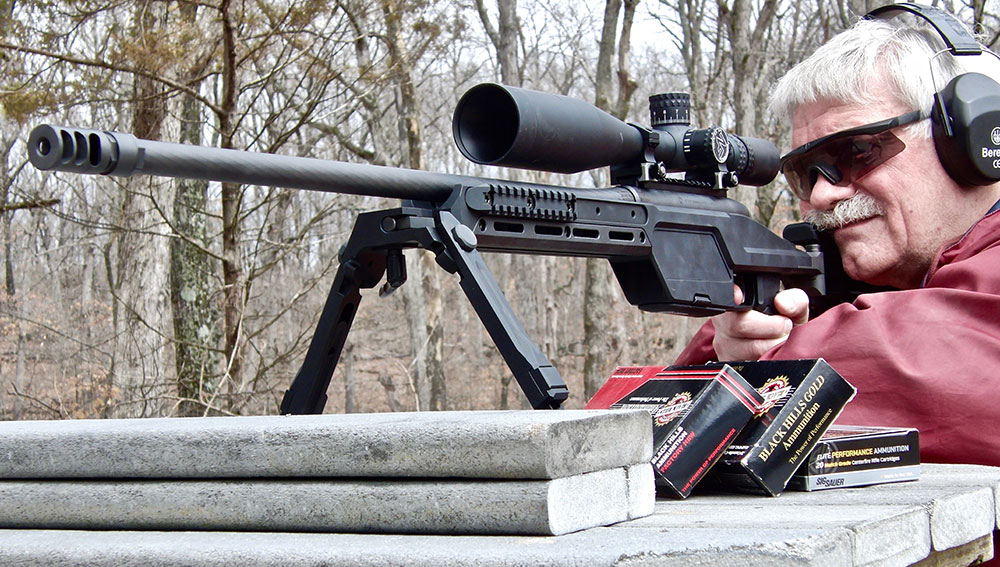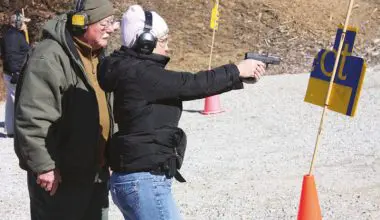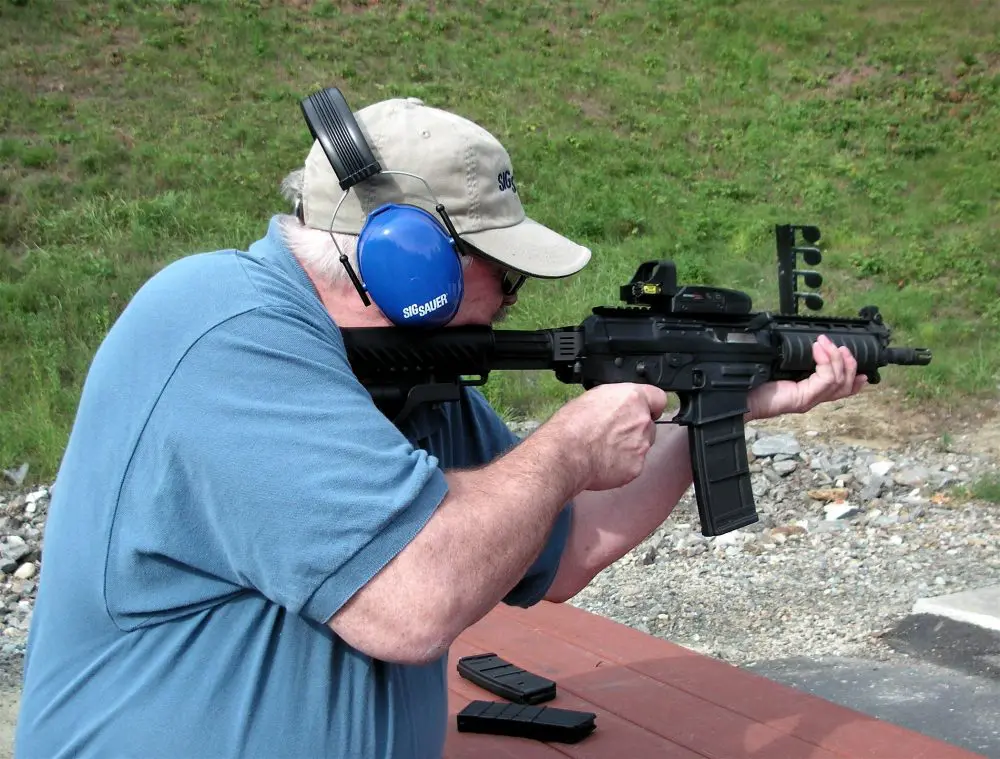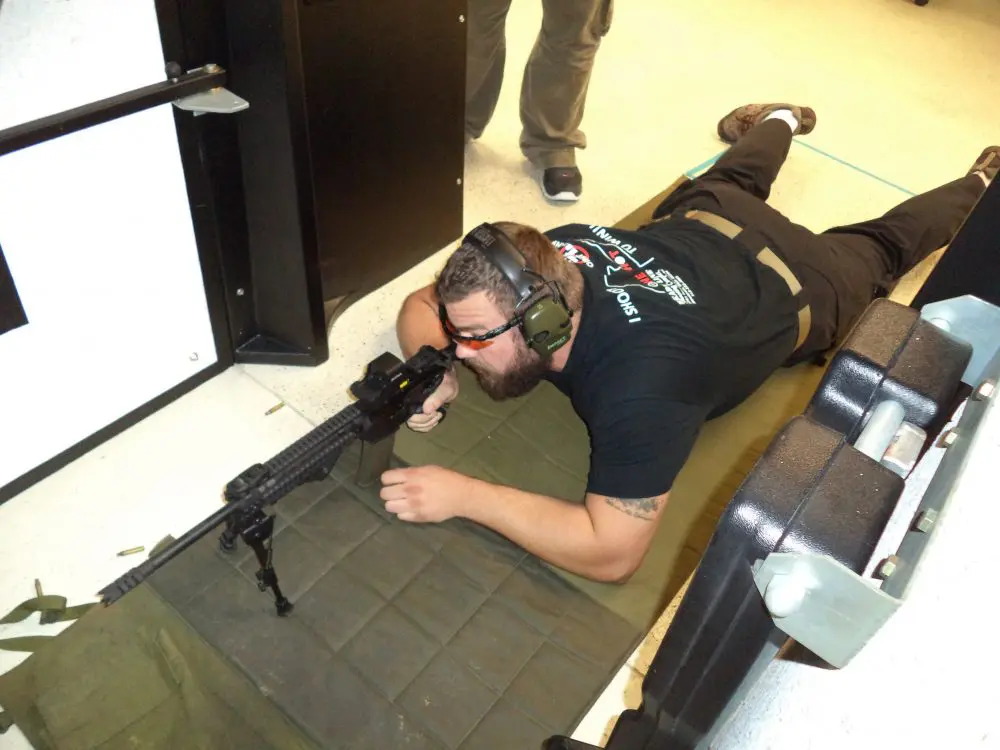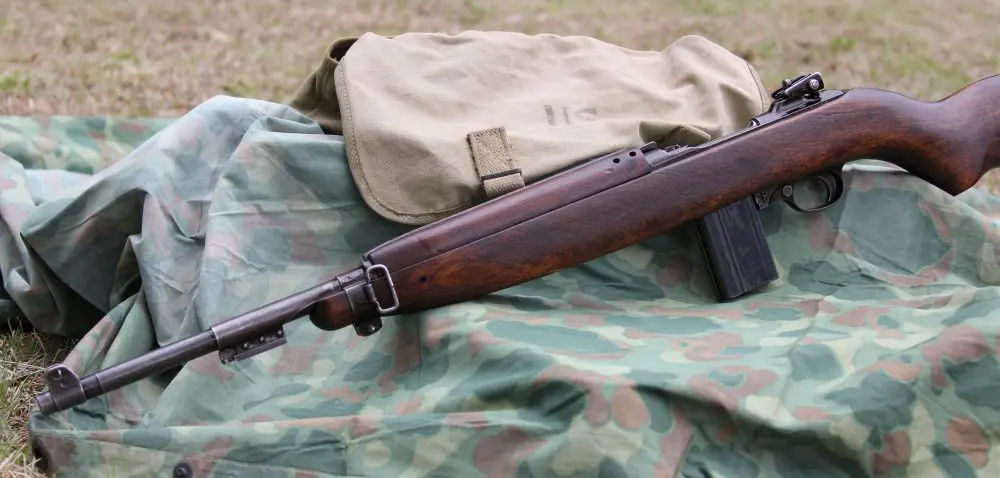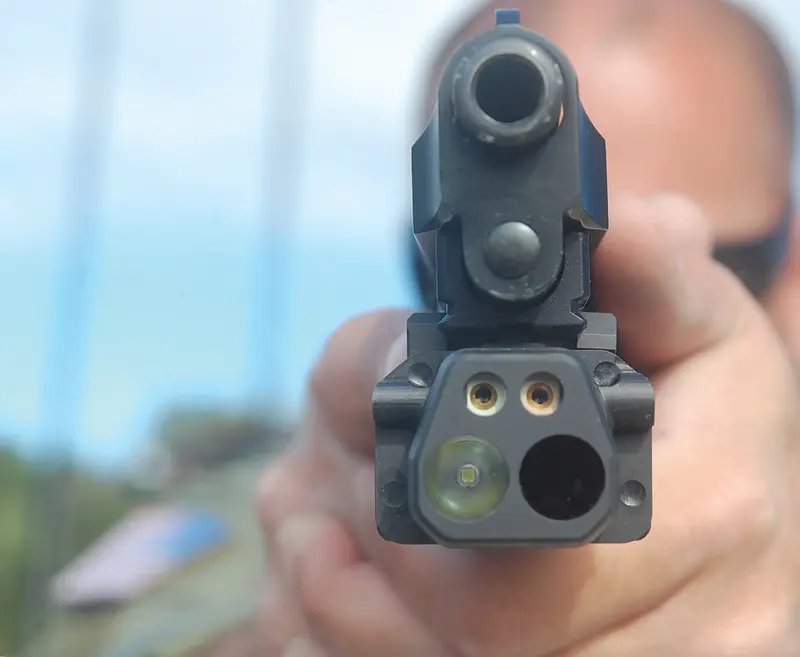
THE pistol—like the carbine—has evolved into a more capable weapons system. And it is about time. For years, the pistol was correctly looked upon as a badge of office rather than a fighting weapon. On the mil side, the pistol was—except for certain units with a Direct Action mission—a non-entity.
And even when we started to understand the capabilities of a pistol, they paled in comparison to that of long guns. Much of that had to do with the short sighting radius, which made it difficult to hit targets at distance or in low light on demand; unsuitable ammunition; magazine capacity and so on.
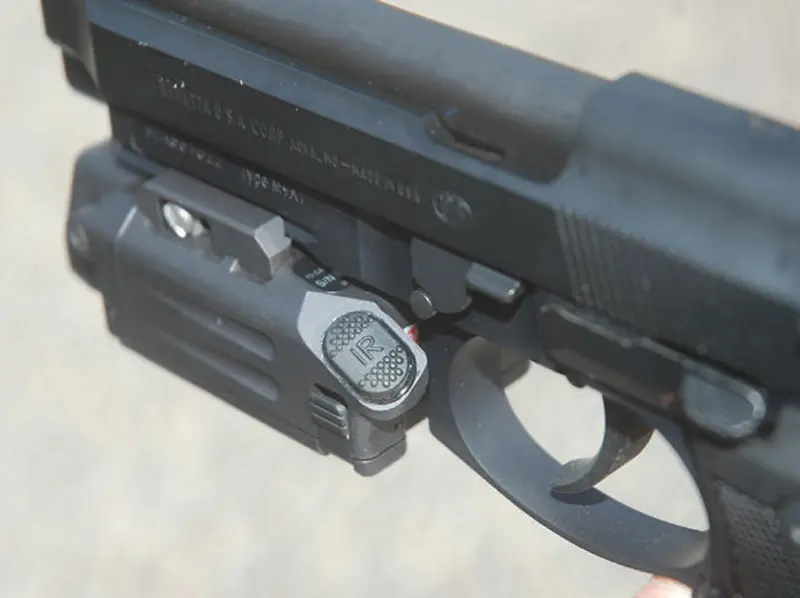
Table of Contents
PISTOL ENHANCEMENTS
Ammunition was enhanced first, and while no pistol caliber will deliver the terminal ballistics of a long gun, there are times when a long gun is not available, practical or is non-functional. The low-light issue was negated by the introduction of weapon-mounted lights (WML), manufactured by several companies with various degrees of usefulness. These white lights greatly enhanced the shooter’s ability to engage a threat in low/no light.
This solved some but not all of the problems. More on this later.
As for sight radius, this has become partially mitigated with the use of red dot sights (RDS) mounted on pistols. This technology is emerging, and we are likely to see a great increase in durability and functionality in the near term. Sadly, the same Luddites who cried about RDS on carbines are adding negativity to their use on pistols, but as with all things, this too will mature.
Magazine capacity is a function of size. This includes the size (diameter) of the cartridges as well as the size of the gun—specifically the grip. Currently, modern anti-personnel ammunition blurs the distinction between 9x19mm, .40 and .45 caliber. If there is a difference, it is small, and most will opt for a gun with greater ammunition capacity. Larger diameter cartridges result in lesser on-board capacity.
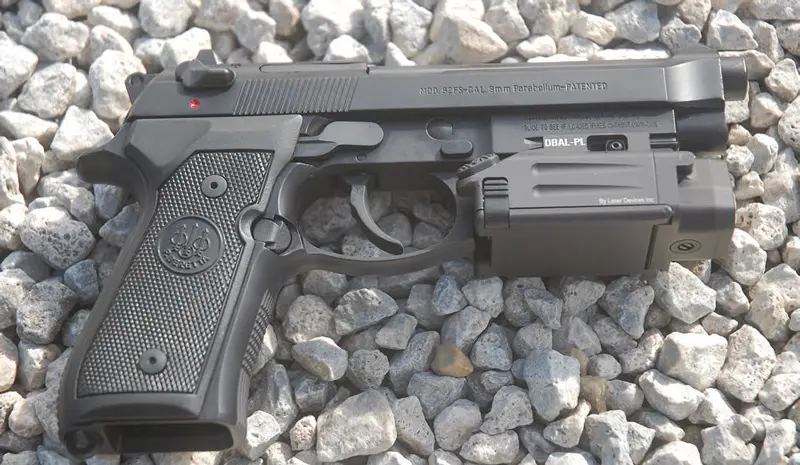
WHITE LIGHT ON BOARD
As the nature of physical combat changes, so do the tools with which we complete those tasks. If we don’t evolve, we become stagnant. Or as a sage once stated, we become stuck on stupid. A prime example of the evolution is how we look at the M4 carbine family. It started out as a minor step up from the older 14.5- inch AR family of weapons, but has now grown into a more capable and useful fighting tool with the addition of red dot sights, weapon-mounted lights, visible lasers, infrared laser aiming sights, and infrared illuminators.
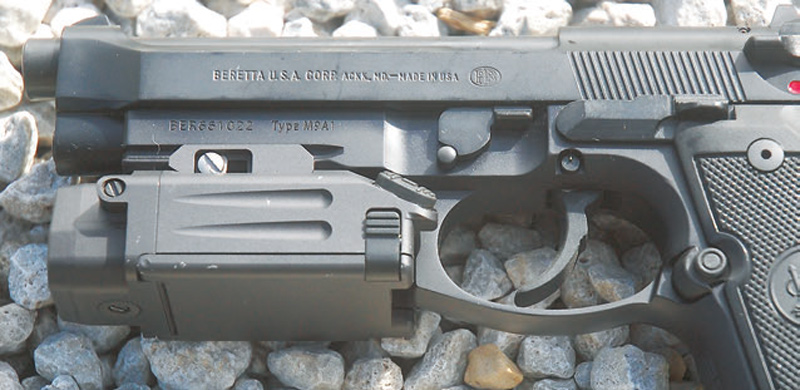
These enhancements permit easier target identification and engagement in daylight and low/no light. There was a lot of resistance to these enhancements by the Luddites, who believe in a simple and less capable gun, but these same folks often forget that not everyone’s guns sit in a safe and only see the light of day on alternate Thursdays in months ending in vowels. For casual use, a barebones gun is the ticket, but for those who are doorkickers by trade, these items are necessary. For them, a pistol is often carried as a secondary weapon. It also has use in certain other tactical situations when using a long gun is contraindicated, such as when operating in very confined spaces.
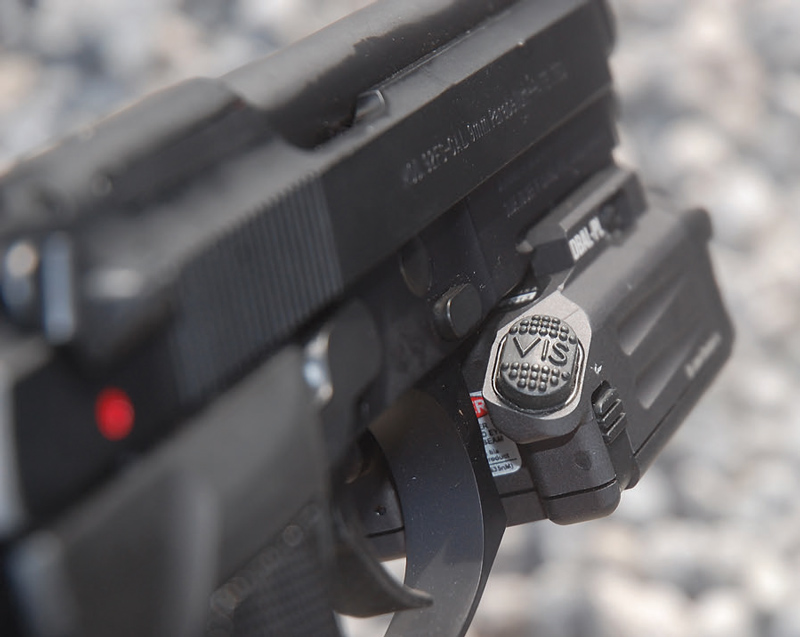
We non-Luddites learned a long time ago that a pistol-mounted white light was a force multiplier. That light allowed us to acquire, identify and service threats as necessary, and in low/no light. That was a major step forward, though many have somehow failed to grasp the usefulness of being able to actually see a threat in low light. Without getting positive identification on a target, we run the risk of shooting the wrong person or not shooting the person who is trying to shoot us. While both of these are options, neither is optimal.
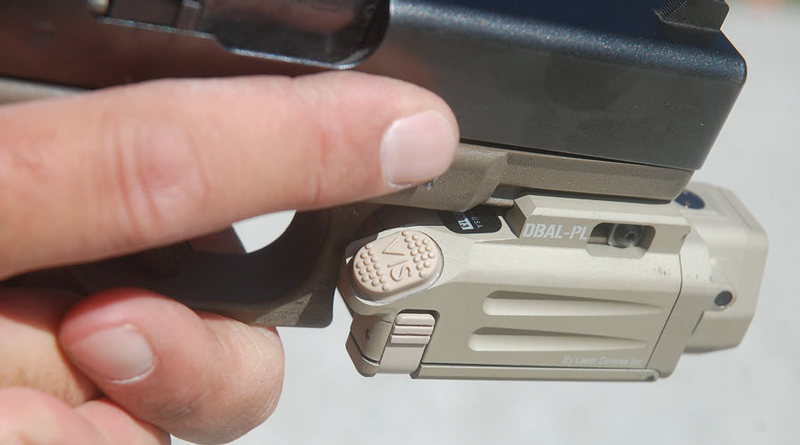
VISIBLE LASER
The white light was followed by a visible laser, though many fail to see the usefulness of that as well. The visible laser allows us to accurately shoot from non-standard positions when we cannot properly see the sights, and also allows us to identify a threat/danger area to others.
Infrared lasers exist for long guns and to a lesser extent with pistols. As they require the use of night vision devices (NODs) to see them, the costs of the NOD, mount, helmet, and the unit on the gun put them out of the price range of many average earth people— but they too are a requirement for others. Viable red dot sights (RDS) are now available for pistols as well.
This is somehow offensive to the Followers of Ned, who believe that any technology introduced after some arbitrary date/time/group is somehow a plot by (insert favorite conspiracy group here) to deflower the purity of their favorite gun, gear, etc. If you are among that group, prepare to be greatly offended.
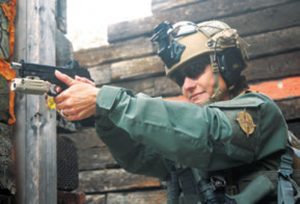
WHITE LIGHT PLUS LASER
The white light is usually a standalone unit, but there are some models (the SureFire X400/400U being one) that are combined with either an IR or visible laser. The units are, by technological constraints, bulkier than a plain WML. After all, TANSTAAFL.
SureFire makes excellent products, but the visible laser in the X400 is mounted (relatively) far below the line of fire, creating an offset issue that may be problematic in a surgical shooting situation. A sufficient white light (500 lumens being the standard), visible laser, infrared illuminator, and infrared laser aiming dot have never been brought together in a single unit that is compact enough to be carried in a holster.
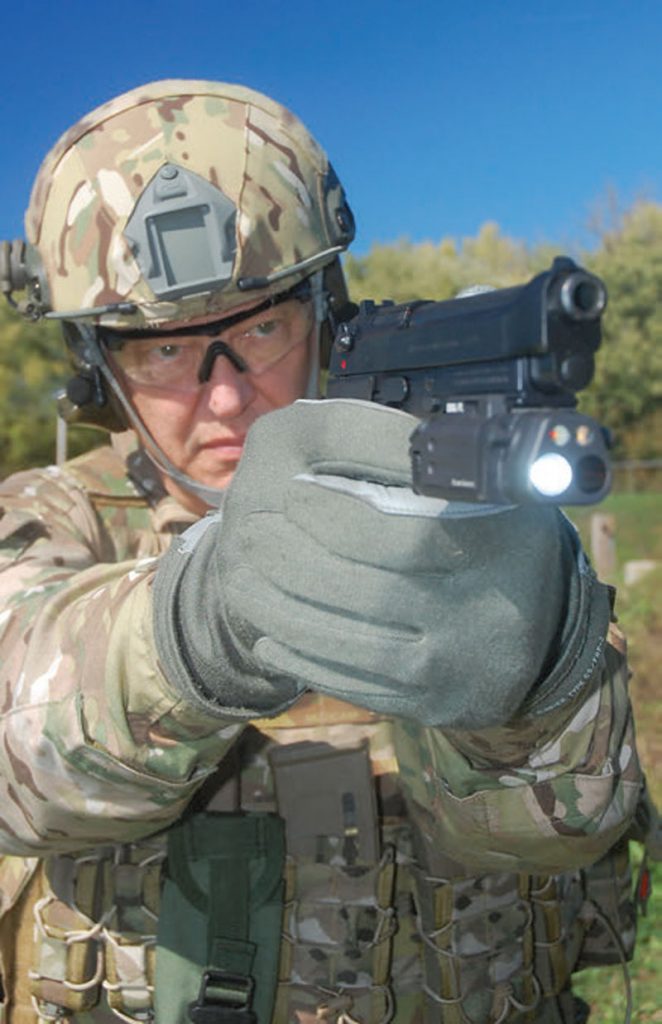
Why do we need such a device in the first place? Most people don’t, and that is a fact. But this is not a unit for casual shooters or competitors. Consider that there are those who kick doors for a living. The pistol WML is necessary, and the visible laser is useful for a lot of reasons. But what about if they are working under NODs? The carbines have the full capability (white light, vis laser, IR laser and IR illuminator), and if the big gun goes down, why should they have less than that capability on their pistol?
AND NOW FOR THE PISTOL …
By the time you read this article, Laser Devices should have their DBAL-
PL (Dual Beam Aiming Laser-Pistol) on the market. This is a compact (3.35x 1.63×1.32 inches) lightweight (5 ounces) multi-function aiming laser. The housing is made of 7075 aluminum and is just a tad wider and a different configuration than the SureFire X300. This means it will not fit in any of the current Safariland holsters—for a while, anyway. But those folks are pretty smart when it comes to selling stuff….
The visible and IR lasers are of course slaved to each other, meaning that you can harmonize the visible laser to your pistol during daylight and it will also zero the IR laser. The horizontal and vertical corrections are slotted screws, thus requiring a screwdriver to adjust them. So while it requires a tool, it also eliminates the possibility of accidentally moving the zero.
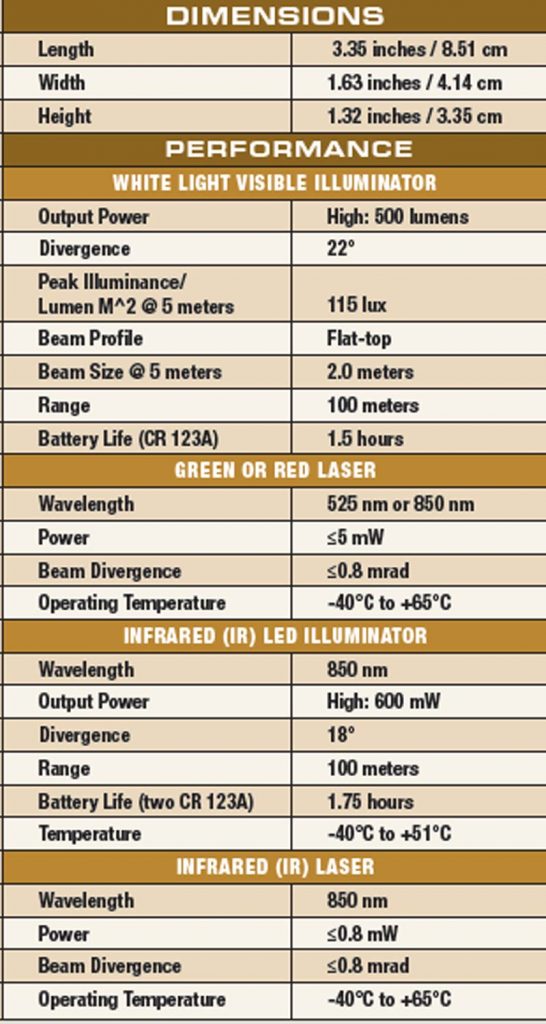
The controls for this unit are different than what we have been used to seeing on WMLs. There are two slanted finger pads, one on each side of the trigger guard. The white light and the visible laser (options are for red or green) are on the right side. Both will turn on when the switch is operated. The switch on the left side operates the IR laser and IR illuminator, and the same switch operates both. Both switches are constant on, as the designers correctly established that the shooter’s hands would be better used in operating the pistol than dicking around with switches.
INTUITIVENESS ISSUES
I agree wholeheartedly with this concept, but my only complaint about the unit is with the switching. I have small paws, and operating any switches that require me to contact them digitally requires extra effort, which could detract from the purpose at hand. In other words, the functioning of this unit requires separate thought and action to activate it. It is not intuitive. I would venture that proper initial training combined with regular sustainment training would alleviate this.
However, I have been using the Sure- Fire DG switch on my pistols for as long as they have been out, and find them to be intuitive. Not being an engineer, I have no idea how you could incorporate a multi-function switch into a DGtype switch, but hope the designers can make that happen.
Mounting is by means of a cross bolt and sliding rail, which permits its mounting on a variety of platforms.
The PL will be available in both the full-power mil model as well as a civilian model. Our experience with the DBAL-PL is somewhat limited, which is directly related to the lack of available holsters. Once that happens, we’ll be running it in our Shoot House classes on a regular basis.
Like all multi-function aiming lasers, the DBAL-PL is not for everyone. If it meets your particular needs, it is a worthy addition to your kit.
